
views
X
Research source
Fortunately, there are ways to straighten your teeth and keep them straight. See your dentist or orthodontist for treatment and avoid bad habits that cause crooked teeth.
Wearing Braces and Retainers

Find an orthodontist. Orthodontists are dentists who specialize in diagnosing, preventing, and treating irregularities in your teeth. See your regular dentist and ask for a referral to an orthodontist. Your dentist can probably make helpful suggestions for finding a professional in your area. The orthodontist will evaluate your teeth, jaw, and gums and help you decide on the best treatment plan for you. If you have health insurance that covers dentistry, call your insurance company and ask for a list of in-network orthodontists that they will cover. Some dentists can do orthodontic work, whereas others will refer you to a specialist. Just ask!
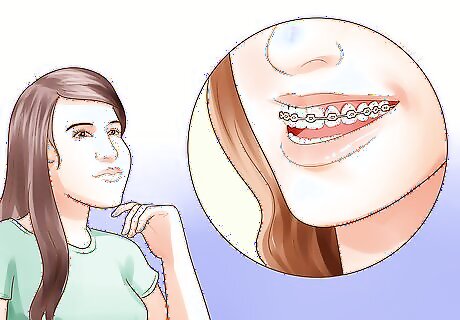
Get braces. Braces are a traditional way of realigning crooked teeth. You will have small brackets cemented to your teeth and connected by wires. The braces will apply pressure to slowly move your teeth into a straighter position over time. You will see your dentist or orthodontist periodically so they can appropriately tighten your braces. How long you have braces varies and depends on your teeth, but the normal range is between one and three years. Braces now are more comfortable than ever before.
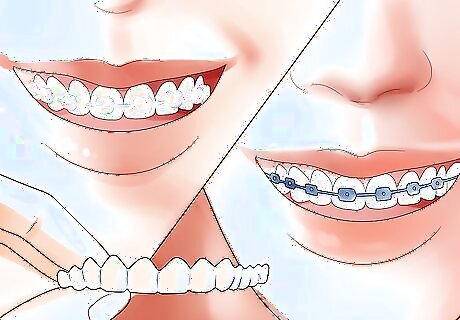
Choose your type of braces. Braces can be fun bright colors, or subtler tooth-colored brackets. Some braces can even be placed behind your teeth (lingual braces) so you don’t see them much – they’re nearly invisible, but may be less comfortable. Discuss your options with your orthodontist.

Wear your retainer. Your dentist or orthodontist will probably give you a retainer after your braces are removed. This is a removable mouthpiece that keeps your teeth in their new position. You’ll wear it at night for a while, but not forever. Be sure to wear your retainer as directed by your dentist so your teeth don’t start to shift back to their previous position.
Using Removable Aligners
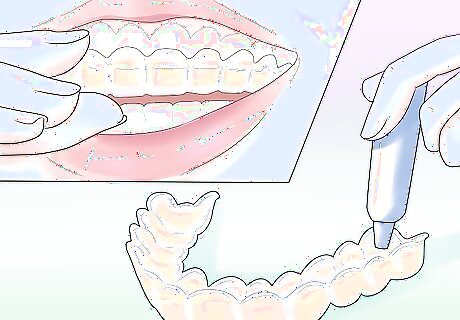
Get fitted for an aligner. Aligners are made of clear plastic or acrylic that you wear over your teeth every day. See your orthodontist to have an aligner specially made for your mouth. You will need to revisit the orthodontist for a new set every month or so. This process gradually moves your teeth into a straighter position.
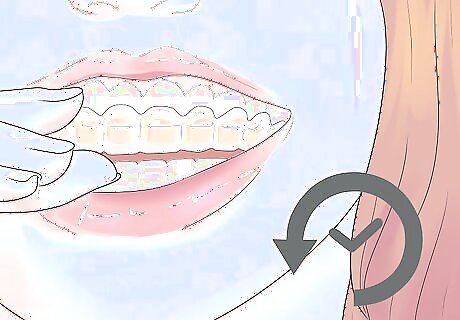
Wear your aligner appropriately. Because your aligner is removable, you’ll be responsible for wearing it correctly. Follow your dentist or orthodontist’s instructions about how long to wear your aligner each day. Take out your aligner before you eat or brush and floss your teeth.
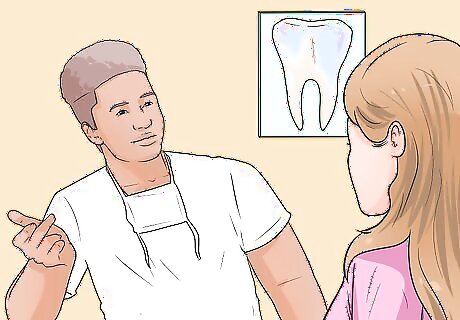
Choose a reputable brand. There are numerous brands of aligners available, such as Invisalign and ClearCorrect. Your orthodontist can help you choose the best kind for you. Some internet companies offer less expensive, mail-order aligners that you use without seeing an orthodontist. Having a full examination by a professional is a safer way to straighten your teeth and know if aligners are right for you.
Trying (and Avoiding) Alternatives

Have surgery. If your teeth are crooked because your jaw is misaligned, surgery can help. Surgery will not change the position of your individual teeth. It can change the position of your jaw if your upper or lower jaw sticks out and causes what dentists call a “bad bite.” This will improve the overall position of your teeth and can straighten your smile.

Stay away from DIY methods. The American Organization of Orthodontists strongly warns against using at-home remedies to straighten your teeth. Following “how-to” guides from the internet without an orthodontist’s supervision can damage your teeth and gums and cause lasting harm. It’s much safer and more effective to have a professional treat your teeth than to try to do it yourself. Do not: Wrap string or rubber bands around your teeth Use paper clips Bite on objects like pencils Follow the advice of a YouTube video or blog
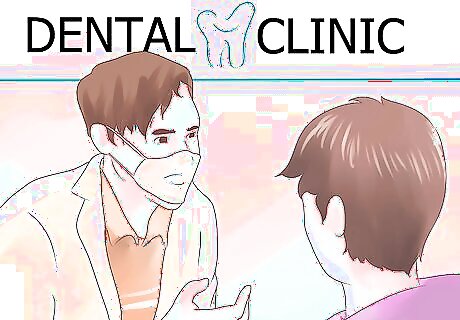
See your orthodontist if you’ve been trying to straighten your teeth at home. DIY tooth straightening methods can cause pretty severe harm to your teeth and gums. If you have been trying to fix your teeth at home using a “how-to” guide from the internet, stop right away and see your dentist or orthodontist. They can help repair and prevent further damage, and begin to straighten your teeth safely and appropriately. Sometimes, damage from DIY methods can be irreversible.
Changing Habits that Cause Crooked Teeth

Sleep on your back. If you sleep on your stomach, you constantly apply gentle pressure to the side of your face and your teeth. Slow, gradual pressure over time is what causes teeth to move, so sleeping on your stomach may make your teeth shift out of alignment after a while. Get in the habit of sleeping on your back or your side.

Sit up properly at your desk. If you sit at a desk a lot, it’s easy to rest your chin in your hand throughout the day. This habit can shift your jaw and teeth subtly. When sitting, tilt your pelvis back so that you aren’t sitting on your tailbone. This creates an easier posture to help you avoid slumping forward and leaning your head on your hand.
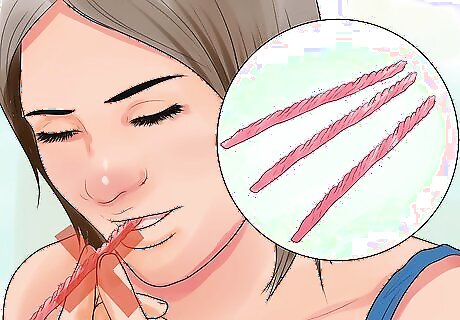
Avoid sucking on objects. Thumb sucking and overuse of pacifiers commonly causes crooked teeth for children, whose teeth and gums are developing. Help your child have a healthy smile by eliminating these habits as early as you can. For adults, avoid habits that put consistent pressure on your teeth and gums like constantly chewing hard candy or sucking on objects absentmindedly.
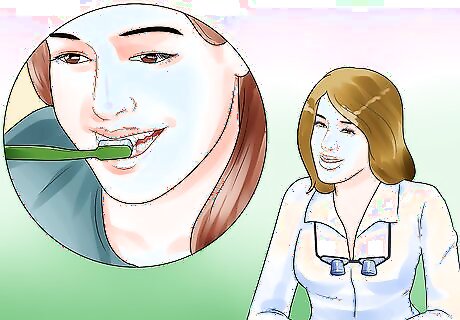
Maintain good oral hygiene. If your gums and teeth are healthy, your teeth are more likely to stay straight. Develop good oral hygiene habits to avoid gum disease and tooth decay and maintain straighter teeth. Brush and floss your teeth twice a day.
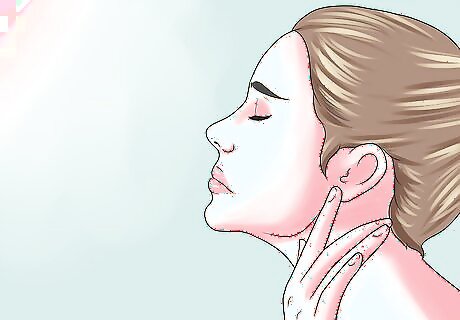
Breathe through your nose. Breathing through your mouth all the time may cause your jaw to narrow and can shift your teeth out of alignment. Remember to breathe through your nose whenever possible. If you have sinus problems or difficulty breathing through your nose, talk to your doctor about solutions.




















Comments
0 comment